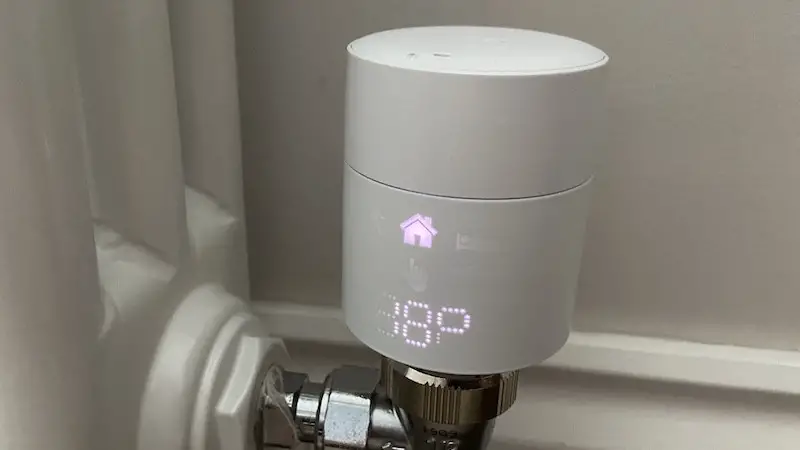Almost a century after its introduction, a deceptively simple yet brilliantly effective technical innovation is as relevant as ever. Radiator thermostats play a crucial role in the eco-friendly renovation of European buildings, although you may not know it. Inefficient building heating systems are responsible for enormous annual energy losses. Optimization is possible. Find out how a thermostatic radiator valve works so you can advise your customers on how to improve the temperature control of their radiators.
Radiator thermostatic valves (TRVs), often referred to as “radiator valves”, are primarily used to regulate the flow of hot water into a radiator, thereby influencing the air temperature in the room. With the help of a Radiator Thermostatic Valve (TRV), you can adjust the temperature in each room of your home independently, saving you money and effort while still creating a comfortable living environment.
With the correct installation of a radiator thermostatic valve, you can divide your home into several heating zones, even if you only have central heating. Basically, radiator thermostatic valves (TRVs) are an inexpensive and simple technology to regulate the temperature of a room and the amount of heat produced by a radiator.
How do TRVs work?
A radiator thermostatic valve automatically regulates the amount of hot water flowing into your radiator at any given time. The valve mechanism consists of only two parts – the head and the body – with the head, as you might imagine, resting on the body. When the temperature in a room begins to rise or fall, a capsule in the TRV’s head expands or contracts, automatically moving a pin in the valve body, allowing the valve to open or close.
If the room cools down too much, the capsule will shrink and the pin will pop out, allowing extra hot water to flow into the radiator. However, when the room temperature rises above a comfortable level, the expansion of the same capsule forces the pin to close the valve, limiting the flow of hot water.
The capsules in radiator thermostats are powered by a metal spring filled with wax or liquid. The latter is preferred for its greater precision and reliability in temperature control. Unlike their wax counterparts, liquid TRVs are much more sensitive to temperature changes, which is one of their main advantages. Because liquid TRVs can quickly change the water flow rate into the radiator, their cost is significantly higher than their wax counterparts, but both types of TRVs are reasonably priced.
Is it worth having thermostatic valves for radiators?
Maybe you have a thermostat that regulates the temperature in your home and you’re wondering why you need a separate set of radiator thermostats. With a TRV, on the other hand, you can set the temperature in each room individually, so you don’t have to keep readjusting the thermostat if the temperature rises or falls too quickly.
For example, if you have a single wall thermostat and a central boiler for heating and hot water, you are probably wasting energy heating unused spaces. Since heating and hot water use most of the energy in your home, installing a TRV along with other heating controls like programmable thermostats and room thermostats can save you a lot of money.
It is estimated that radiator thermostatic valves (TRVs) can reduce heating bills by up to 40 percent, with the exact amount depending on a number of factors including radiator wattage, insulation and placement.
It all depends on how you organize your heating system.
Most people prefer a temperature of 21 to 22 degrees Celsius in their living room when they relax in front of the TV in the evening. But even the coldest person will not feel comfortable in a bedroom whose thermostat is set above 20 degrees Celsius; this is where the TRV comes into play.
You can save money on heating bills by independently adjusting the temperature in different rooms or areas of your home. By setting up individual temperature controls for each room, you can avoid wasting energy on heating unused areas and reduce heating costs.
TRV Considerations
A few final thoughts on radiator thermostatic valves:
- Radiator thermostatic valves monitor the ambient air temperature and regulate the output of the radiator accordingly.
- They may be filled with wax or liquid and expand or contract depending on the room temperature.
- Make sure nothing is blocking them, including furniture or curtains, for optimal performance.
- The price range for a decent TRV is between 20 and 30 euros.
- You can either set up the system yourself or hire a technician.
- If you think about how to use them, you can and will end up saving money.
- Do not use them in the bathroom and keep them far away from the boiler thermostat.
Conclusion
That’s our brief overview of radiator thermostats and how to get the most out of them with your new radiator. I hope you got the answers you need. If you have any other questions about thermostats, feel free to contact the tado° team.

